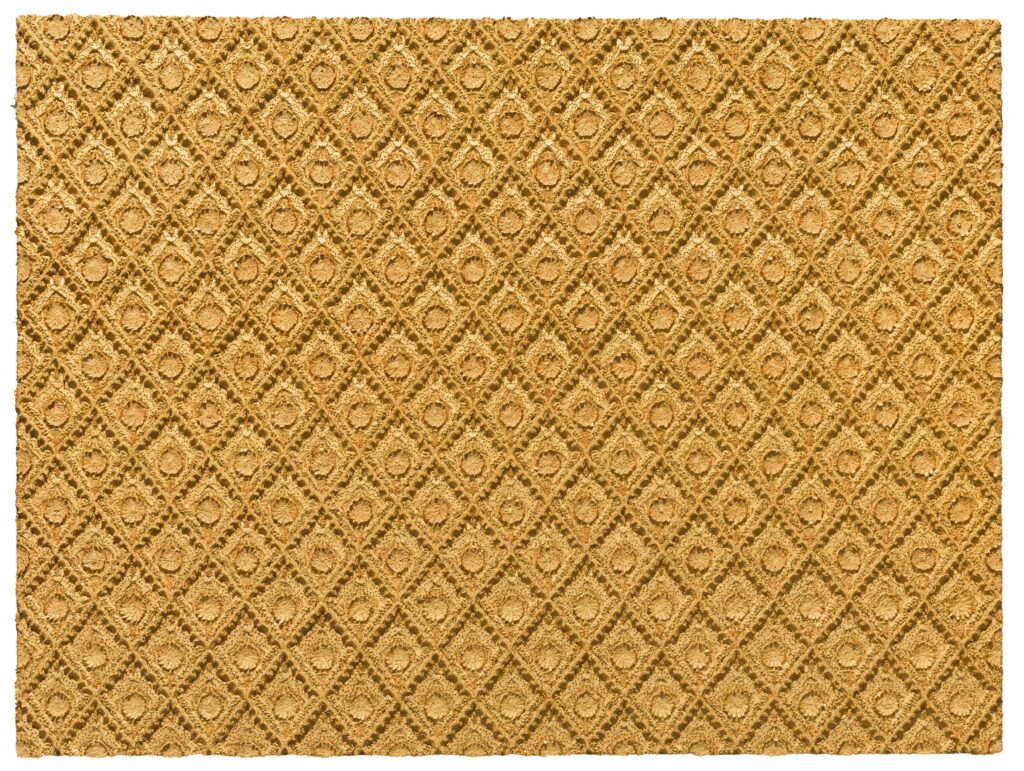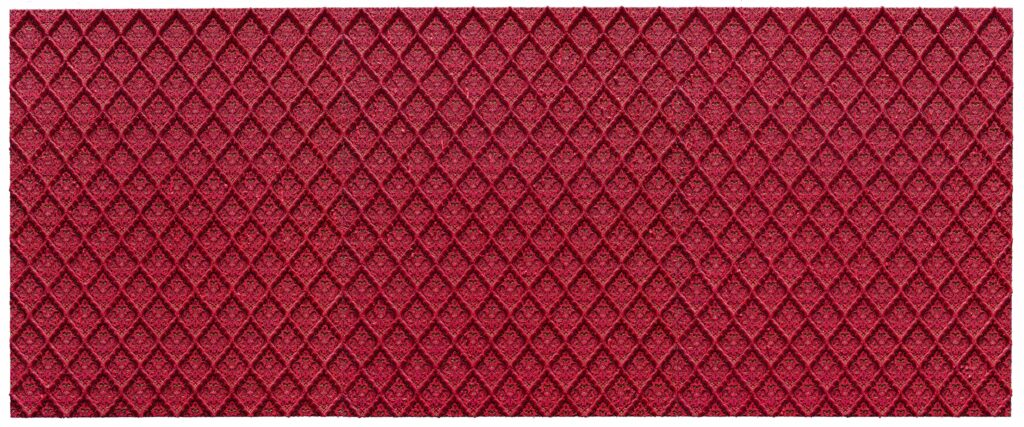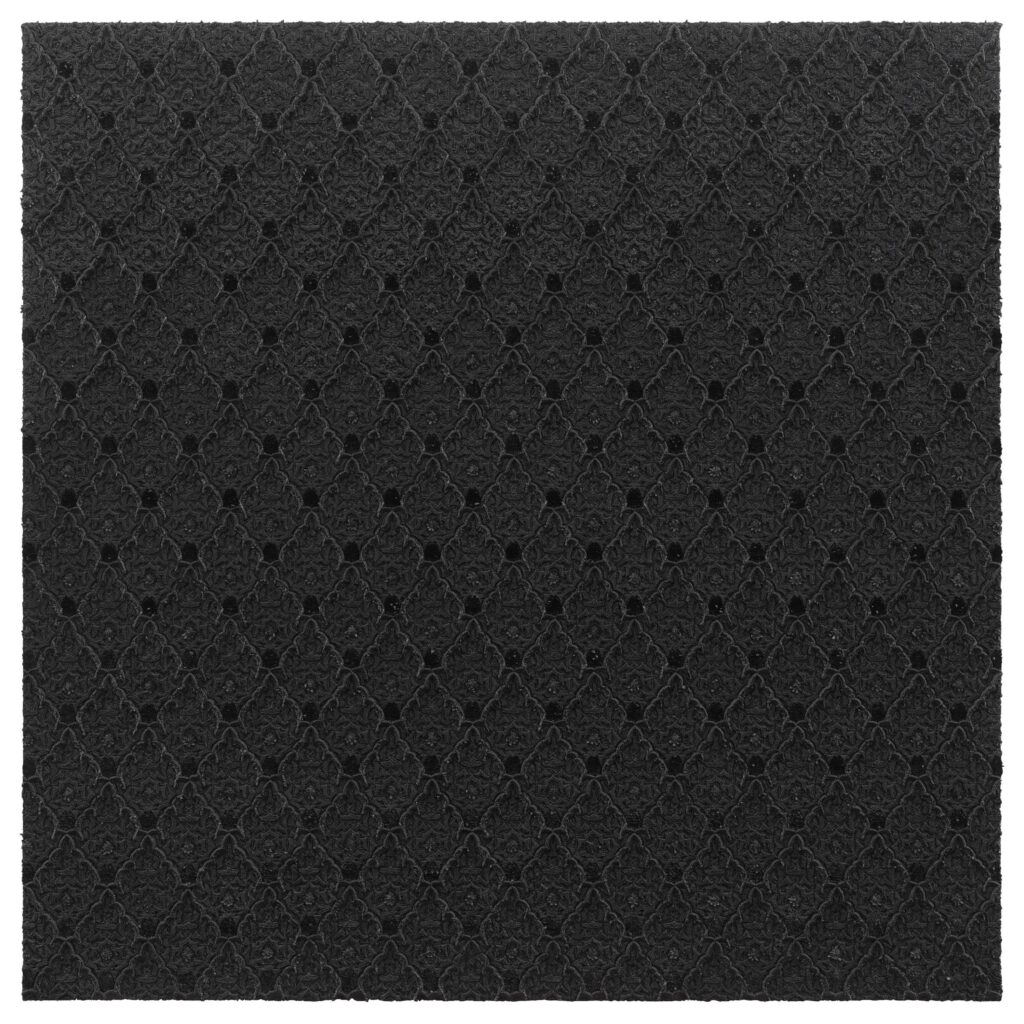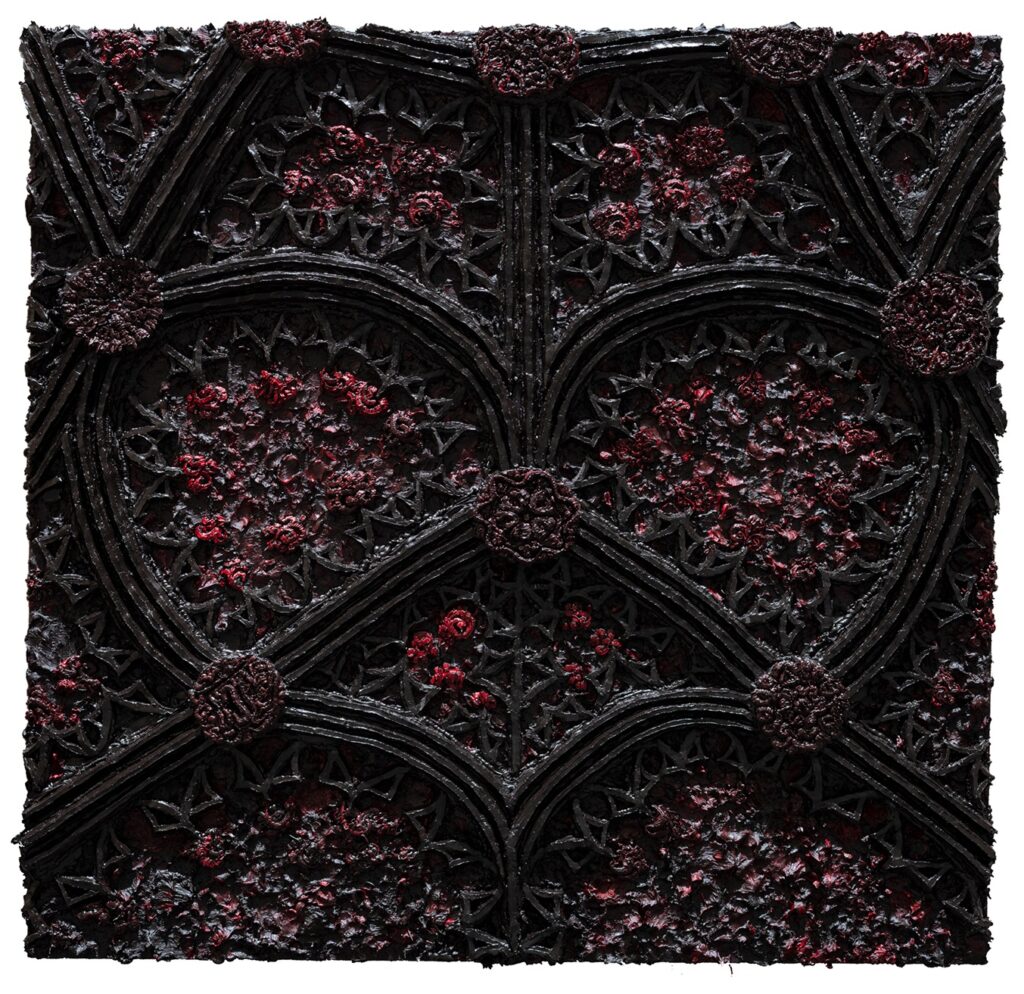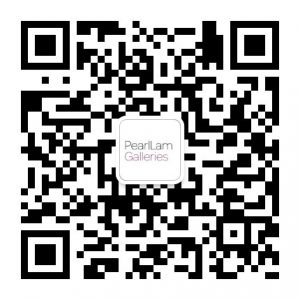8 June–18 August, 2024
ZHANG JI: Ultima
Shanghai
Overview
Shanghai—Pearl Lam is delighted to announce Ultima, an upcoming solo exhibition by Zhang Ji that showcases the artist’s latest series of works, titled The Skin of Truth and Ultima, with a case study approach. The artist has arrived at the threshold of art creation through the act of religious practice; in the repetitive and precise creation processes, he accomplishes a spiritual meditation forged by the flesh.
For Zhang, art creation is a process of self-meditation, akin to a personal practice of “investigating natures and principles and rectifying the mind”. He focuses on extracting motifs from ancient religious architecture and references them through abstract painting, replacing brushstrokes with an anti-painting language of paint relief. Through experimentation, he distils a form of painting that defies conventional painting practices.
In this way, the artist must strive to suppress his subjective will over the picture in the painting process to pursue a state of “selflessness”. Yet, he cannot relinquish control entirely so as not to risk the painting becoming unconscious scribbling. Throughout this process, he neither treats objects and materials solely as tools for expressing personal ideas nor views his works as merely projections of one’s own spirit. Nor does he regard them as pure material objects. Hence, spiritual meditation serves to balance these aspects, becoming a crucial factor in reaching the “threshold”.
Zhang largely employs oil paint and uses a specially designed pneumatic injector to create a sense of thickness that is akin to low reliefs in his paintings. Selected motifs as the smallest image units are repetitively arranged into larger hand-drawn subjects, which are then scanned and projected onto the canvas. Zhang then holds the pneumatic injector filled with paint and outlines and fills the lines in the picture until the entire canvas is covered. Throughout the rigorous creation process, the artist upholds an almost ascetic craftsmanship, persistently pursuing hands-on embodiment.
The series The Skin of Truth on show in this exhibition began in 2011. It originated from the artist’s early memories of intricate decorative reliefs in churches that he drew as a child. This inspiration was later expanded to encompass ancient religious art from around the world, such as mosques, Catholic churches, Hindu temples, and Buddhist temples. The artist extracts motifs from these architectural sites, referencing them through abstract painting. Zhang visited numerous religious architectural places of interest to enhance his art creation through firsthand sensory experiences. Many of the works showcased in this exhibition are derived from decorative motifs he photographed or sketched on-site in Spain. Some of the architecture Zhang visited include the Great Mosque of Córdoba, the Alhambra palace and cathedral in Granada, the Alcázar and Palacio de las Dueñas in Seville.
Ultima, the other series of works in the exhibition, reflects the artist’s self-evolution from The Skin of Truth towards absolute abstraction. It signifies a transition from an emphasis on pictoriality to an exploration of the underlying motivational logic behind painting. Nonetheless, the imagery depicted in the paintings serves as an illusion; the free state and meditative realm attained by the artist in the everyday creation processes are more significant than the images perceived by the eye. Throughout the creation of this series, the artist strives to capture the logic of motivation behind painting to the largest extent possible. This logic is not derived from reasoning or argumentation, but rather emanates from personal experiences, intuitive insights, and a holistic understanding of the world.
About Zhang Ji
Born in 1978 in Shandong, Zhang Ji graduated with a master’s degree from the Mural Painting Department of the Central Academy of Fine Arts in 2008. Zhang’s art creation focuses on taking motifs from ancient religious architecture and referencing them through abstract painting. He replaces brushstrokes with paint reliefs, using a language that opposes painting, in a manner akin to physical experimentation, and distils a form of painting that defies conventional notions of painting.
During his college education, in addition to receiving systematic academic training, Zhang also conducted fieldwork at various archaeological sites and museums. As a Buddhist, Zhang travelled to Dunhuang and studied murals in the renowned Thousand Buddha Caves; he then visited multiple religious architectural sites around the world to enhance his art creation through firsthand experiences. Many of his works are derived from his on-site photography or sketches. The artist’s own religious belief undoubtedly sparked his sociological contemplation and interest in religious art. On the other hand, modern art in the west, ranging from Duchamp and Piero Manzoni to 1960s New York conceptualism, has profoundly inspired his art as well.
Zhang’s works have been collected by important public and private institutions and collectors, including Uli Sigg, dslcollection in France, Saudi Royal Collection, European royal collections, Dubai Royal Collection, and Fundación Picasso Museo Casa Natal (Picasso’s Birthplace Museum), among others.



